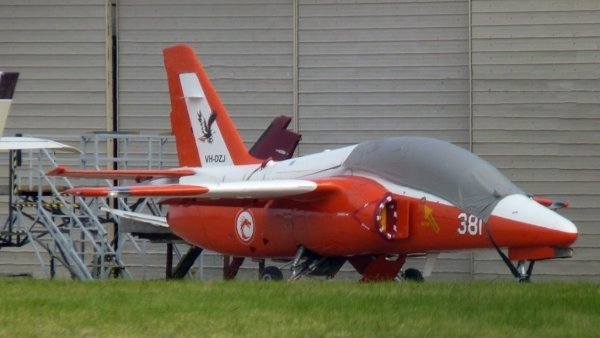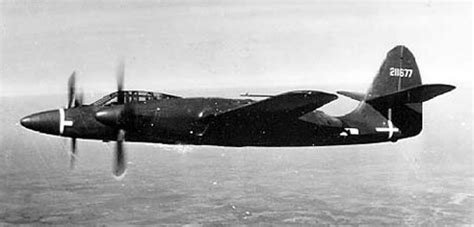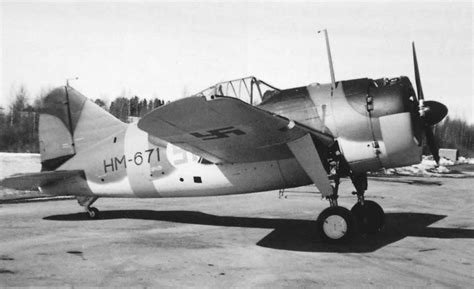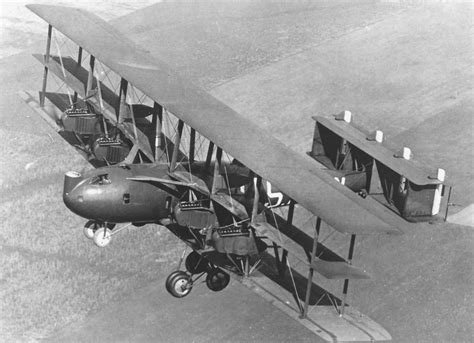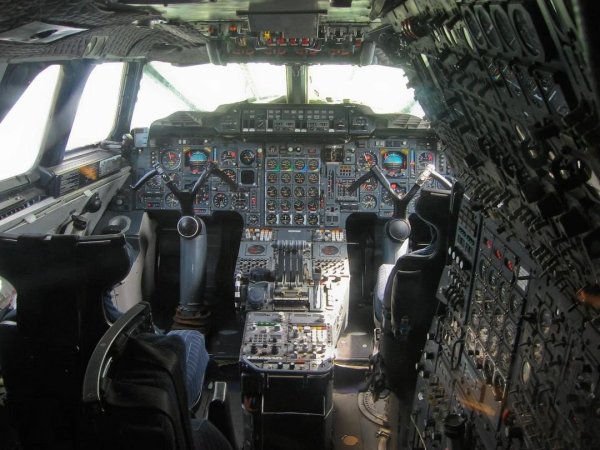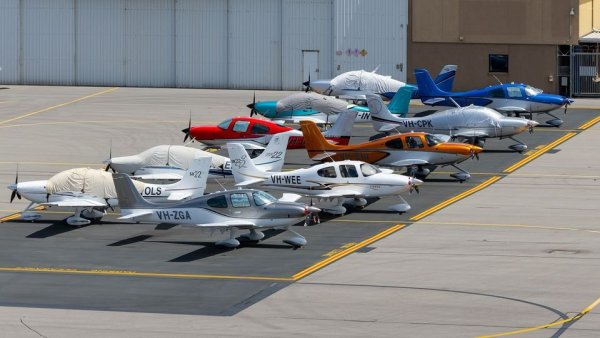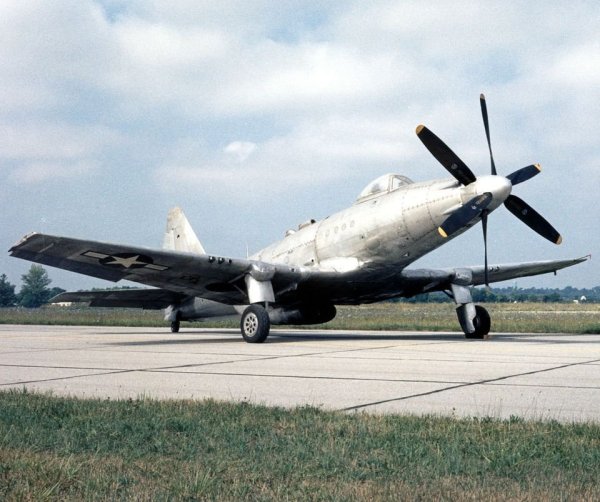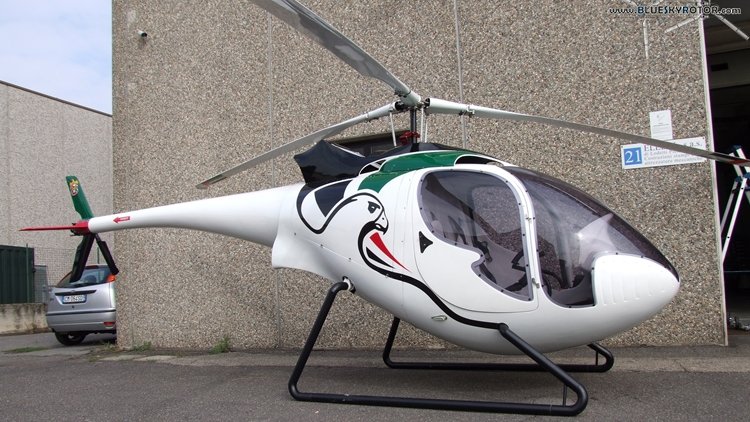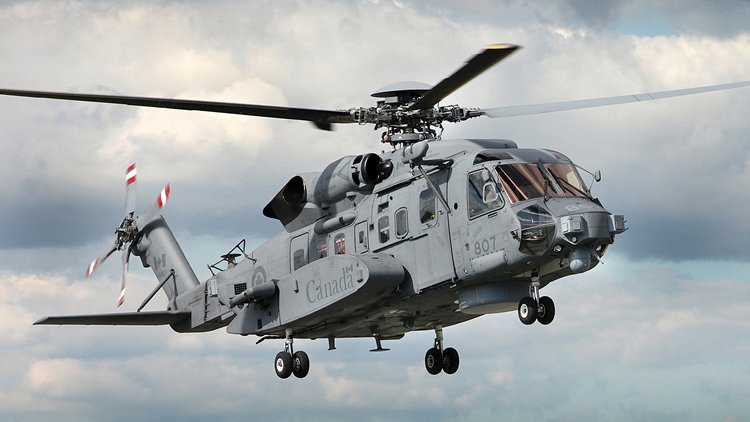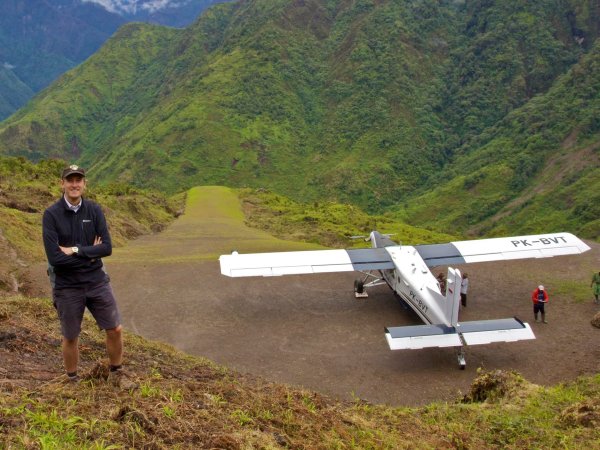-
Posts
7,574 -
Joined
-
Last visited
-
Days Won
67
Content Type
Profiles
Forums
Gallery
Downloads
Blogs
Events
Store
Aircraft
Resources
Tutorials
Articles
Classifieds
Movies
Books
Community Map
Quizzes
Videos Directory
Everything posted by red750
-

Mid-air collision over Port Phillip Bay 19/11/2023
red750 replied to red750's topic in Aircraft Incidents and Accidents
-
The McDonnell XP-67 "Bat" or "Moonbat" was a prototype for a twin-engine, long-range, single-seat interceptor aircraft for the United States Army Air Forces. Although the design was conceptually advanced, it was beset by numerous problems and never approached its anticipated level of performance. The project was cancelled after the sole completed prototype was destroyed by an engine fire.
-
The Heinkel He 280 was an early turbojet-powered fighter aircraft designed and produced by the German aircraft manufacturer Heinkel. It was the first jet fighter to fly in the world. The He 280 harnessed the progress made by Hans von Ohain's novel gas turbine propulsion and by Ernst Heinkel's work on the He 178, the first jet-powered aircraft in the world. Heinkel placed great emphasis on research into high-speed flight and on the value of the jet engine; after the He 178 had met with indifference from the Reichsluftfahrtministerium (RLM) (the German Reich Aviation Ministry), the company opted to start work on producing a jet fighter during late 1939. Incorporating a pair of turbojets, for greater thrust, these were installed in a mid-wing position. It also had a then-uncommon tricycle undercarriage while the design of the fuselage was largely conventional. A total of 9 units were produced. For more details, click here.
-
The RFB X-114 was a ground-effect craft, designed chiefly to operate over water but capable of flight at higher altitudes where required, carrying five or six passengers or freight along coasts and capable of surveillance duties. One was evaluated by the German military in the late 1970s, but no orders followed. The RFB X-114 Aerofoil Craft was an experimental ground-effect vehicle intended to work over water, with the ability to fly out of ground effect when required. It was the last of three such aircraft designed by Alexander Lippisch in the 1960s and early 1970s. The low powered, two-seat proof of concept Collins X-112 was followed by the RFB X-113, structurally and aerodynamically refined, but still low- powered. The much larger X-114 seated six or seven and had a 149 kW (200 hp) engine. All three were inverse delta aircraft, that is, they had a wing that was triangular in plan, but with a straight, unswept leading edge. Combined with strong anhedral, this layout produces stable flight in ground effect. Specifically, it is claimed that it is stable in pitch and also that it can fly in ground effect at altitudes up to about 50% of its span, allowing it to operate over rough water. This contrasts with the lower aspect ratio square wing of the Ekranoplans, which leaves ground effect at only 10% of span, limiting them to the calmer waters of lakes and rivers.
-
The VL Humu (Whirlwind) is a Finnish fighter aircraft, designed by Valtion lentokonetehdas in 1944, and based on the American Brewster F2A Buffalo. The Finnish Air Force had acquired 40+ surplus B-239 naval variants of the Brewster Buffalo and put them to good use during the Winter War, so it was decided in 1942 to produce a copy due to aircraft shortages. Chief designer Martti Vainio, along with designers Torsti Verkkola, Arvo Ylinen at Valtion Lentokonetehdas were tasked with designing the new aircraft as well as a replacement wing made of wood instead of metal. The Humu was largely constructed out of wood due to scarcity of metals, but the frame was made from steel and its design followed closely that of the Brewster. It was planned that captured Soviet engines and instrument panels would be used. It was powered by a 930hp Shvetsov M-63 engine, previously tested on a Brewster. The wooden wing added 250 kg of extra weight and moving the fuels tanks from the wing to the aft fuselage adversely affected maneuverability due to the center of gravity being shifted. The first flight took place on 8 August 1944. Later flight testing gave a total flight time of 19 hours and 50 minutes. The aircraft was 250 kg (551 lb) heavier than calculated, its engine was underpowered, and it was felt that the fighter would not be able to compete against enemy aircraft. The end of the Continuation War in September 1944, combined with the aircraft's poor performance, however, put the end to the project. Only one was built.
-
The Wittemann-Lewis NBL-1 "Barling Bomber" was an experimental long-range, heavy bomber built for the United States Army Air Service in the early 1920s. Although unsuccessful, it was an early attempt at creating a strategic bomber. Development of the XNBL-1 (Experimental Night Bomber, Long Range) Barling Bomber is generally attributed (the press called it "Mitchell's Folly") to William "Billy" Mitchell, a U.S.Army Air Service General and most vocal advocate of strategic airpower, who in 1919 discovered Walter H. Barling, who had previously worked for the Royal Aircraft Factory. Mitchell asked Barling to design a bomber capable of carrying enough bombs to sink a battleship. Mitchell's goal was to demonstrate the effectiveness of airpower by sinking a battleship from the air, and needed a large, strategic bomber in order to accomplish this feat. Mitchell projected the cost of two prototype bombers at $375,000. On 15 May 1920, the Army Engineering Division sought bids for the construction of a bomber based on Barling's sketches, with the requirement that it be capable of carrying a 5,000 lb (2,300 kg) bomb load, to an altitude of 10,000 ft (3,000 m) at a speed of no less than 100 mph (160 km/h). Only one built.
-
The Fisher P-75 Eagle was an American fighter aircraft designed by the Fisher Body Division of General Motors. Development started in September 1942 in response to United States Army Air Forces requirement for a fighter possessing an extremely high rate of climb, using the most powerful liquid-cooled engine then available, the Allison V-3420. The program was cancelled after only 14 prototypes and production aircraft had been completed, as it was no longer required in its original role, could not be quickly deployed, and possessed no significant advantages over aircraft already in production.
-
The SKT Skyrider 06 is a Swiss helicopter, designed and produced by SKT Swiss Kopter Technology SA of Ambrì. It was first flown in 2013 and entered series production in January 2014. The aircraft is supplied complete and ready-to-fly. The Skyrider development was started in December 2011. In June 2013 the company was formed to produce the aircraft and the first production examples were completed in January 2014. The design features a single main rotor and tail rotor, a two-seats-in side-by-side configuration enclosed cockpit with a windshield, skid landing gear and a four-cylinder, liquid-cooled, four stroke 155 hp (116 kW) Italian MW Fly B22 AeroPower piston engine. The aircraft fuselage is made from steel tubing, with a carbon fibre composite cockpit and tailboom. The aircraft's composite three-bladed main rotor has a diameter of 7.0 m (23.0 ft). The composite tail rotor has two blades and a diameter of 1.4 m (4.6 ft). The cabin width is 130 cm (51.2 in). The aircraft has a gross weight of 600 kg (1,323 lb). With full fuel of 110 litres (24 imp gal; 29 US gal) the payload for the pilot, passengers and baggage is 230 kg (507 lb). Reviewer Werner Pfaendler, describes it as an "elegant design".
-
The Sikorsky CH-148 Cyclone is a twin-engine, multi-role shipborne helicopter developed by the Sikorsky Aircraft Corporation for the Canadian Armed Forces. A military variant of the Sikorsky S-92, the CH-148 is designed for shipboard operations and replaced the CH-124 Sea King, which was in Canadian Armed Forces operation from 1963 to 2018. The Cyclone entered operational service with the Royal Canadian Air Force (RCAF) in 2018 and now conducts anti-submarine warfare (ASW), surveillance, and search and rescue missions from Royal Canadian Navy frigates. The helicopter also performs utility and transport roles in support of national and international security efforts. In 2004, Canada awarded Sikorsky Aircraft a contract for 28 CH-148s with deliveries originally planned to start in 2009. Deliveries were repeatedly delayed due to development issues and difficulty fulfilling contract requirements; the first deliveries, involving six initial helicopters (designated as Block 1), occurred during June 2015. Three years later, the Cyclone Block 2 achieved initial operating capability (IOC). The fleet was briefly grounded in early 2020 following a crash that was attributed to poor documentation and software flaws. Canada began to seek a replacement for the Sea King maritime helicopter in 1986 when it issued a solicitation for the New Shipborne Aircraft (NSA) Project. A variant of the AgustaWestland EH101 was selected and a contract was signed by the nation's governing party at the time, the Progressive Conservatives. After a change of government to the Liberal party, the EH-101 contract was cancelled. The cancellation resulted in a lengthy delay to procure a replacement aircraft. The project took on increased importance in the early 2000s and another procurement competition was initiated. On 23 November 2004, Canada's Department of National Defence announced the award of a CA$1.8 billion contract to Sikorsky to produce 28 helicopters, with deliveries scheduled to start in January 2009.[7] In addition, Sikorsky's subcontractors, General Dynamics Canada and L-3 MAS are responsible for in-service maintenance and the Maritime Helicopter Training Centre including two Operational Mission Simulators. Other elements of in-service support include the Integrated Vehicle Health Monitoring System, spares and software support. The first flight of the first production CH-148, serial number 801 (FAA registration N4901C), took place in Florida on 15 November 2008. For details of design and operational history, click here.
-
-
-
A couple of additions to the Moorabbin Aircraft Museim since my last visit. Eurocopter AS365 Dauphin Evans VP Volksplane VH-DAV Pazmany PL-4A
-
They were all gust control, light on the butter 🧈 This video has... WWW.FACEBOOK.COM They were all gust control, light on the butter 🧈 This video has cycled the internet on all platforms, from multiple users, hundreds of MILLIONS of views, but the real credit goes to @kolton_barney...
-
- 3
-

-
The Ikarus 451 is a family of research aircraft designs built in Yugoslavia in the 1950s, all sharing the same basic airframe, but differing in powerplants and cockpit arrangements. One member of the family Ikarus 451M became the first domestically-built jet aircraft to fly in Yugoslavia, on 25 October 1952. Variants 232 Pionir A small twin-engined prone-pilot research aircraft, powered by 2x 48 kW (65 hp) Walter Mikron III piston engines. (1 built) S-451 A larger, more powerful version of the Pionir, powered by 2x 120 kW (160 hp) Walter Minor 6-III piston engines and also incorporating a prone pilot cockpit. (1 built) S-451M (Mlazni – Jet) Derived directly from the S-451 airframe, the S-451M substituted Turbomeca Palas turbojet engines for the piston engines, in underslung nacelles at the same positions on the wing and conventional cockpit. S-451M Zolja (Zolja – Wasp) Flown in 1954, the S-451M Zolja featured a stretched fuselage, folding wings, and engine nacelles centred on the wing chordline. Powered by 2x 1.57 kN (353 lbf) Turbomeca Palas 056A turbojet engines, the S-451M was used to set a world speed record in its class in 1960. Ikarus J-451MM Stršljen II from 1956 (J-451MM Hornet) on display at the Museum of Aviation J-451MM Stršljen (J – Jurisnik – close support) (Stršljen – Hornet)The intended production close support version with tricycle undercarriage, Turbomeca Marbore engines and cannon armament. (1 built). S-451MM Matica (Matica – Queen bee) Two-seat trainer version, used for a world speed record in 1957. T-451MM Stršljen II A single seat aerobatic trainer, fitted with more ammunition and maximum ordnance weight was slightly increased. No member of the family was produced in any number. For more details on the design and development of the models, click here. For more photos of the various models, click here.
-
I paid a quick trip to Moorabbin today, only the second time since the start of the pandemic. I was shocked at the desecration. The first thing I noticed was that a public road now runs right through where the school I learned to fly at used to be. I learned and got my PPL at Civil Flying School, on Third Avenue. The hangar buildings still appear on the Google maps satellite view of the airport. All the aircraft parking, where I took many aircraft photos, is now a huge warehouse. Aerial view. Everything aviation to the left of this street, which now runs through to the DFO shopping centre has been replaced by warehouses. This is the street that went down to CFS. The new road runs just this side of the warehouse on the left. This warehouse is on Grange Road, where the aircraft are parked in the blue dotted lie area.
-
Virgin Australia cabin crew members are set to strike over what they say is “poverty pay” and unsafe conditions at the leading Aussie airline, some claiming they have been forced to miss breaks and take second or third jobs just to make ends meet. Transport Workers Union (TWU) members have applied to the Fair Work Commission (FWC) for a protected action ballot on Monday over the proposed industrial action. The growing frustration has been mounted by claims Virgin Australia cancelled a meeting responding to workers’ claims for better pay and conditions. But the airline has said it is attempting to bargain in “good faith” after the Cabin Crew Agreement expired less than two weeks ago. “Since that time, Virgin Australia has continued to bargain … with a clear commitment to relevant unions of our intention to reach an amicable solution on a new agreement,” a Virgin spokesman said. In a statement, the TWU said fatigue was “crippling” cabin and ground crew as well as pilots. It said a poor rostering system, “unrealistic” turnaround times and high levels of staff turnover had caused existing crew members to miss breaks on their shifts. “Successive pay freezes and cuts have caused many to seek second or third jobs to pay the bills,” the union’s statement reads. “Cabin crew are responsible for passenger safety, including locking and arming doors, customer welfare and relaying important safety information. “Fatigue can impair crew’s ability to respond to emergencies on the aircraft or in serious medical situations.” In a statement, a Virgin spokesman said the TWU’s move during negotiations “reflects the changed industrial relations landscape and is now a common part of the early process”. Another round of negotiations between the union and the Flight Attendants’ Association of Australia (FAAA) will take place on Wednesday.


